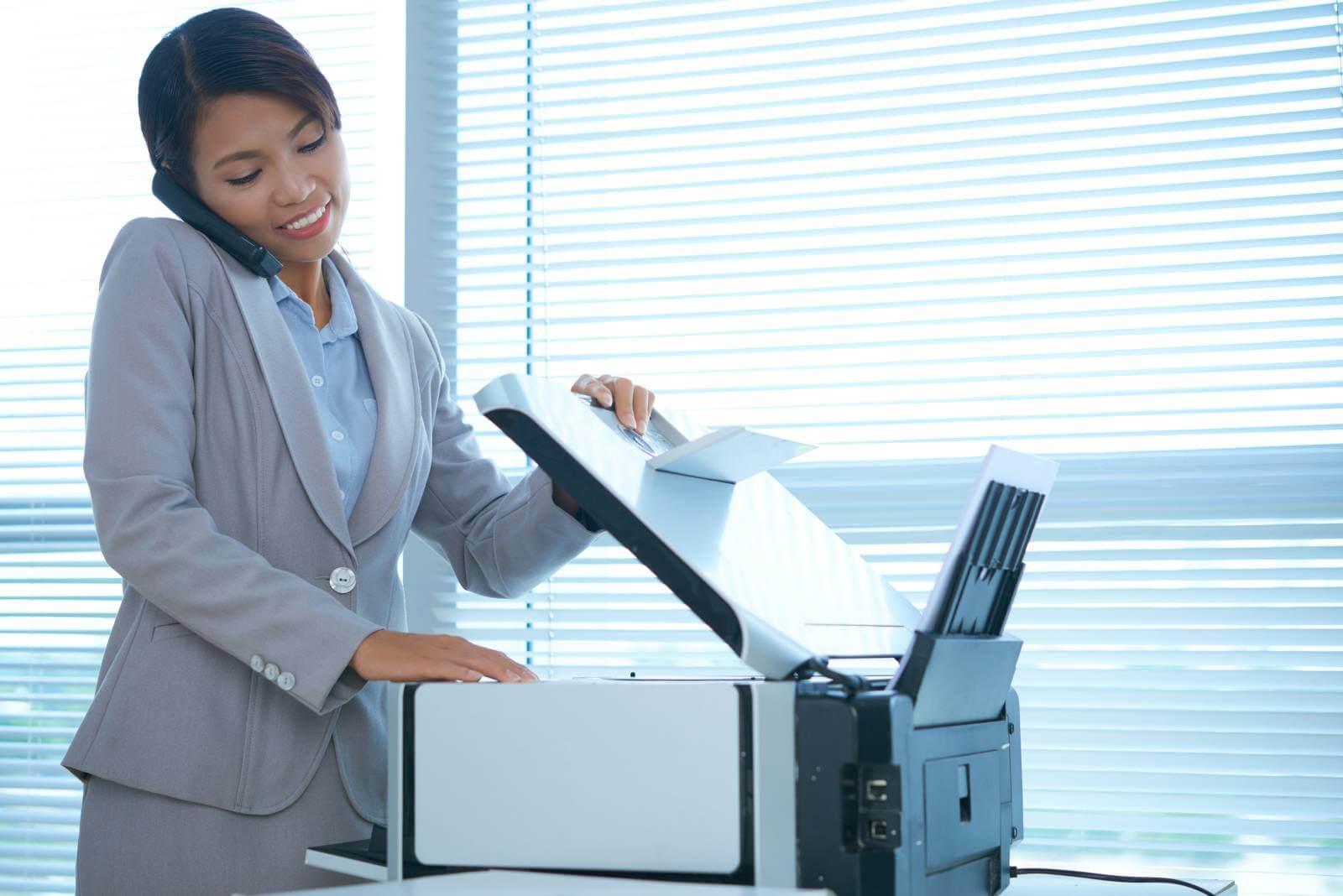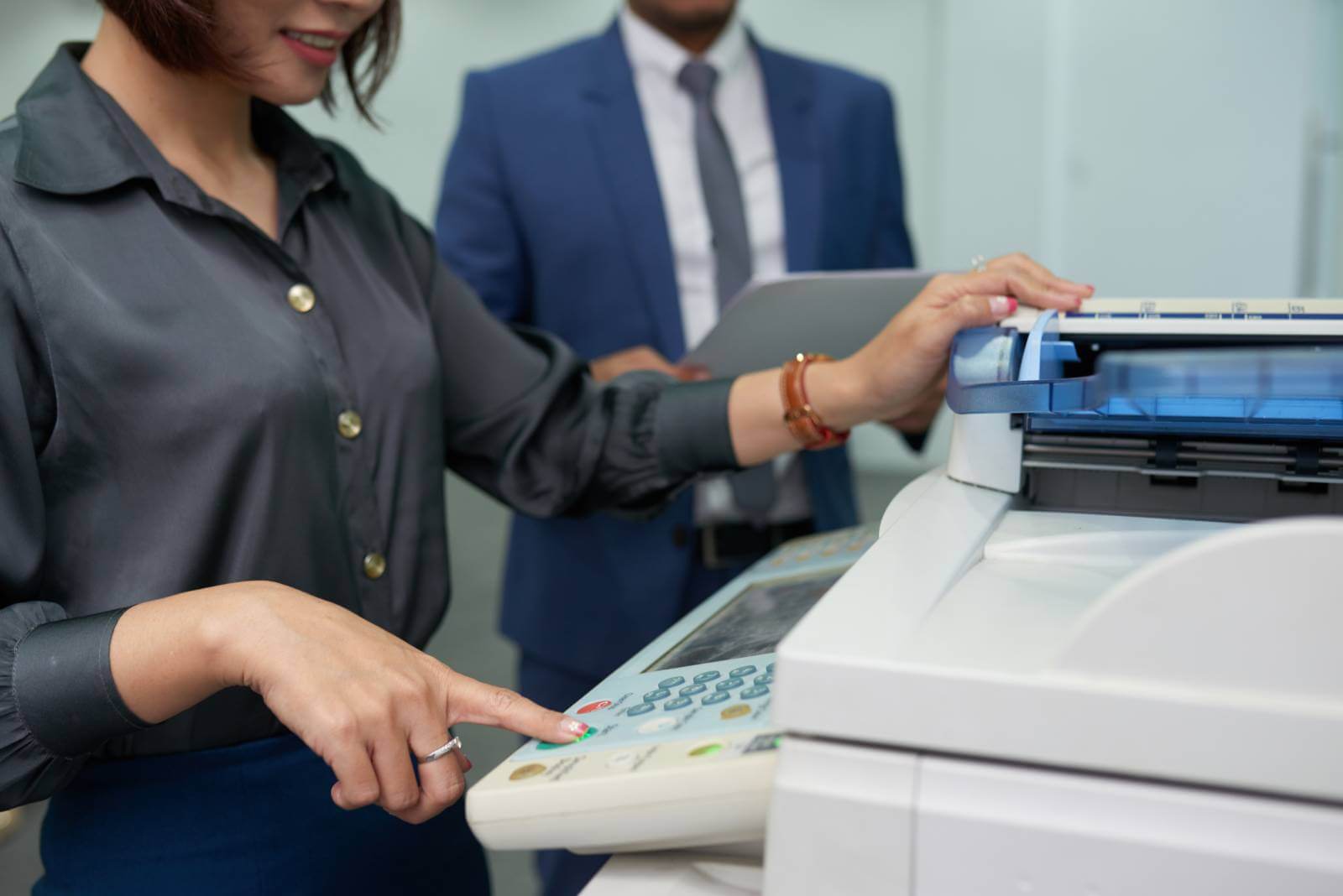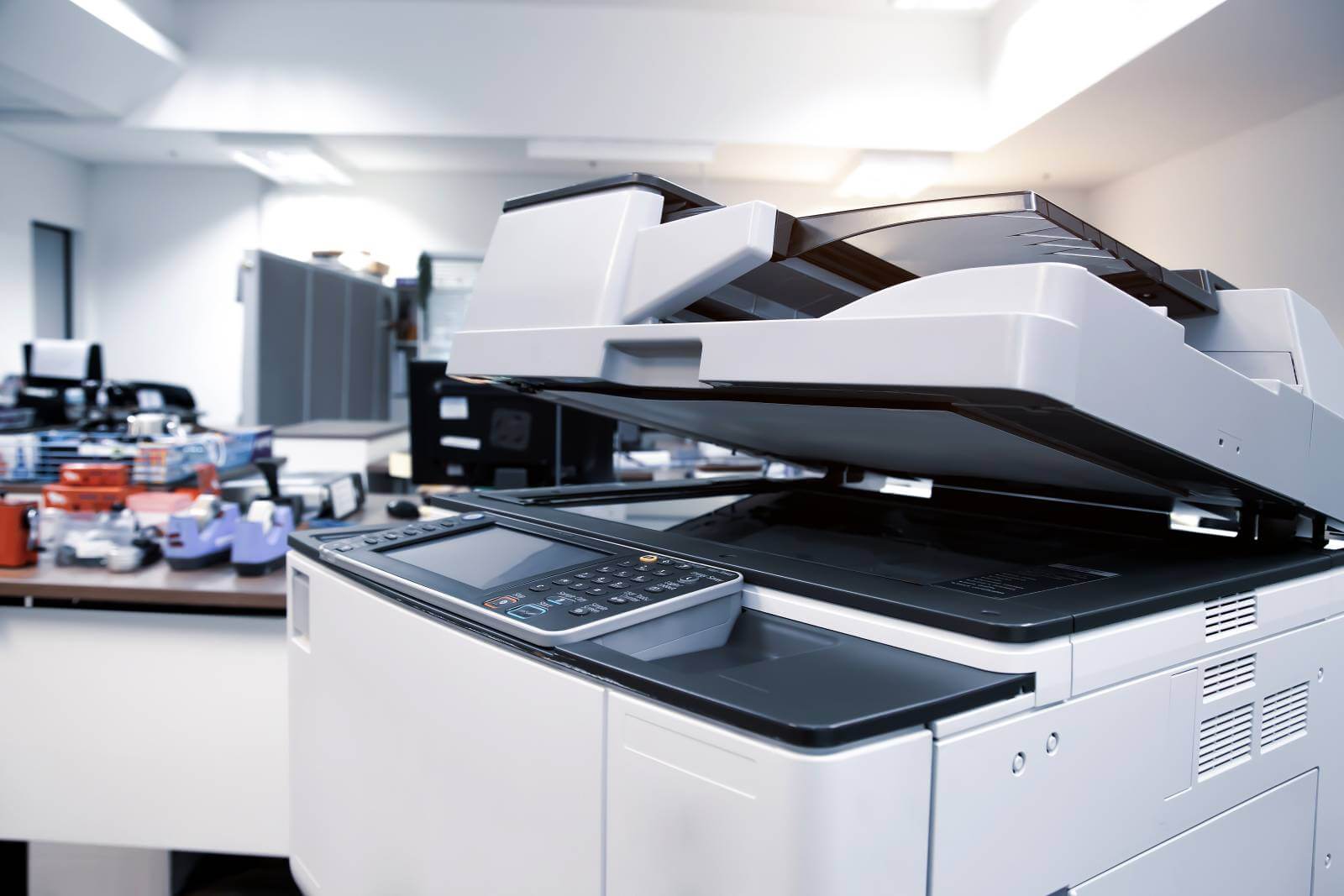
Do You Need Help With The Right Printer For Your Home And Office?
What kind of printer you get for your home depends on what you plan on printing. As a general rule, if you churn out lots of text-based pages, a laser printer will do the trick. If colour documents or photos are on your agenda, you'll want to go with an inkjet. If you plan on doing any scanning or copying, you should look to an all-in-one or multifunction printer. Decent AIOs aren't that much more costly than their printer-only counterparts, and they offer a ton of additional features.
The need for a home/office printer has increased as more of us are working or schooling from home. You could be a parent who needs to print out workbooks for your child. Or you may find that it's easier to make notes on a business report using a pen or pencil rather than a keyboard. Or you've suddenly discovered that a government office is demanding that you snail mail a form to them. Or your local office supply store, which you usually use for printing out occasional forms, is either still closed or not a comfortable place to visit.
Whatever the reason, if you find yourself in need of a printer, it's not difficult to find one. Printers have not changed a lot over the past few years; they've just become more efficient and less expensive. You still will be choosing between laser and inkjet printers; colour and black-ink-only printers; and print-only and multifunction devices. Because of all these decisions that need to be made, it's a good idea to figure out what you want before you click "Buy" at your favourite shopping site.
In this article, I won't be telling you which specific printer to buy. But I will go through some of the choices you are going to be faced with and some of the features that you may want to make sure you're getting.

Types of Printers
The different types of printers available to buyers can be dizzying: From pint-sized portable photo printers to giant office printers that copy, scan, fax, staple, collate, and more; and everything in between. Do you wish there was a guide to lead you through the wilderness of printing types and technologies? That's where we come in.
The best way to understand printers is to take a close look at the main ways they are categorised: By venue (home or office), technology (inkjet or laser); single function or multifunction printers (MFPs), colour or monochrome; general purpose or specialty. We'll examine the characteristics of each of these classifications to give you a better idea of their characteristics. Almost any printer can be classified along each of these lines - for example, the HP Officejet Pro X576dw MFP is an office colour inkjet multifunction printer.
INKJET
Inkjet printers spray tiny droplets of liquid ink onto a page. There are several types of inkjet delivery systems, but most consumer systems use separate ink cartridges, each fitted with a printhead that separates the ink into the nearly microscopic droplets. (Professional-level inkjets will usually have separate printheads that can be replaced on their own.) Colours are created by combining different coloured inks.
The number of ink cartridges that a colour inkjet printer uses varies. The least expensive printers usually use only two cartridges - one with black ink and one that contains cyan, magenta, and yellow ink. Most lower-to-medium priced inkjet printers offer four separate cartridges - cyan, magenta, yellow, and black ink. More upscale printers will have a different black cartridge for text; printers used by photographers or businesses will have a wider selection of coloured inks.
But even the least expensive inkjets can end up running into serious money. The printer itself may not cost more than $50 or $100, but a single set of cartridges can cost nearly as much. And because most colour inkjets will not run at all if any one of the cartridges is out of ink (for example, you can't just print in black if the cyan cartridge runs out), you'll need to replace any spent cartridges. (We'll deal more with ink costs later.)
Inkjet printers are one of the most common types of printer used in both professional and domestic settings. Developed in the 1950s, inkjet printing technology is still hugely popular today due to its numerous advantages and minimal drawbacks.
Advantages:
-
- Capable of producing photo-realistic prints
-
- Practically no warm-up time
-
- Small footprint
Disadvantages:
-
- High running costs (Cost per page)
-
- Slow print speeds
-
- Sometimes produce erroneous empty cartridge warnings.
-
- Prone to clogging
-
- Wet prints
LASER
These devices use lasers to create static electricity on a rolling drum inside the printer. The static electricity attracts toner (ink in the form of powder), which is melted onto the paper.
While toner cartridges initially cost more than ink cartridges, they also last far longer than liquid ink; as a result, your cost per page will be less. Laser printers also tend to initially cost more than inkjet printers - but they can save money over the long term.
Laser printers have several other advantages over inkjet printers - unless you need colour. They are faster than inkjets (especially low-end inkjets, which can be very slow), and the quality of their text printing is more precise (although current inkjets are certainly precise enough to suit most documents).
Colour laser printers are also more available than they used to be. However, they are more pricey, and unless they are professional-level printers, the colour will not be as good as an equivalently priced colour inkjet.
The laser printer was developed by Xerox in the 1960s when the idea of using a laser to draw images onto a copier drum was first considered. Laser printers are still widely used in large offices as they are traditionally more efficient than inkjet printers.

Advantages:
-
- More cost-effective than inkjet printers
-
- Increases productivity
-
- High print speed
-
- Higher paper capacity
-
- Often expandable with Paper Trays, finishers etc.
-
- Grows with your business
Disadvantages:
-
- May require short 'warm-up times'
-
- Larger footprint
-
- High voltage usage leads to small carbon emissions.
Multifunction
Sometimes known as all-in-one printers, multifunction printers are often capable of performing printing, copying, scanning, and faxing tasks. This can simplify the completion of multiple tasks within an office or domestic environment, with no need for more than one unit.
If you see yourself working from home for the foreseeable future - or even if you don't - you may want to consider a multifunction (also known as an all-in-one or AIO) printer. These devices don't just print from your computer but allow you to scan existing documents, and either copies them or saves them as files. (Some also let you fax a scanned document, but since faxing has become much less necessary, this feature is quickly disappearing.) They are very handy for keeping the paperwork around your home to a minimum since you can save PDFs of most of your papers (especially the ones you've had sitting around for years) and then dispose of the actual hardcopy.
(Yes, you can use your phone's camera to scan and upload documents, and if you only occasionally need to scan a document, that could be enough for you. However, the quality of a phone-scanned document doesn't come up to the quality of a good scanner.)
Most consumer-level multifunctions will let you copy anything up to an 8.5 x 11-inch paper (popularly known as letter-sized), but you can also buy printers that will let you handle an 8.5 x 14-inch (legal size) paper. Suppose you see yourself doing a lot of copying or scanning. In that case, you should look for a multifunction with an automatic document feeder (usually referred to as an ADF) that lets you move several pages through the system quickly.
Advantages:
-
- More cost-efficient than buying multiple devices
-
- More compact than buying multiple devices
-
- Perform numerous tasks simultaneously.
-
- More power-efficient than the implementation of numerous devices
Disadvantages:
-
- Can restrict usage time available for larger workgroups.
All-in-One Inkjets
Combining the technology of inkjet printing with the functionality of a multifunction printer: all-in-one inkjet printers are capable of providing full service to a busy office environment whilst retaining the high-quality prints that inkjet is known for.
Advantages:
-
- High quality printed output.
-
- Cost-efficient and compact alternative to buying numerous machines
-
- Power-efficient
Disadvantages:
-
- Wet prints
-
- High running costs
Dot Matrix
Dot-matrix printers are the oldest established type of printers still available on the market. Images and text are drawn out in tiny dots when a print head strikes an ink-soaked cloth against the paper in the required pattern or formation.
Advantages:
-
- Low initial unit costs
-
- Low running costs
-
- Low maintenance costs
-
- Able to perform in hot and dirty conditions
Disadvantages:
-
- Low resolution printed output.
-
- Noisy
A3
Capable of printing on A3 sheets, A3 printers are well-suited to business and domestic settings which require larger scale prints. A3 printers often have options that produce other sized prints and have numerous input trays, simplifying the process. They're also available with both laser and inkjet technology.
Advantages:
-
- Larger print size
-
- A wider range of options
-
- Allows you to bring outsource print-runs back in-house
Disadvantages:
-
- Higher initial cost
-
- Larger footprint
3D
One of the most exciting developments in printing technology history, 3D printing is becoming more affordable for professional and domestic users. Modern 3D printers are capable of producing 3D objects and items using high-quality resin.
Advantages:
-
- 3D prints
-
- Limitless possibilities
-
- Capacity for full customisation
Disadvantages:
-
- High initial costs
-
- High resin costs
-
- Still developing technology
Other Types Of Printers
Monochrome and colour printers
If your workplace churns out text documents, you may want to consider a monochrome printer. Because they only print in black and white, they're best for text and for graphics that can translate well to black and white, but they seldom print photos well. Today's monochrome printers are all laser or LED-based.
If your printing needs ever venture beyond black and white, a colour printer may be a wise investment. The inclusion of colour expands one's printing options, opening the door for full-colour graphics and photos. Many home users will want a colour inkjet to print photos, and colour lasers that can print high-quality photos and graphics may be suitable for businesses to bring the printing of their own marketing materials in house. Unlike monochrome printing, which requires only one ink colour (black), colour printers utilise multiple inks or toner cartridges.

Single function and multifunction printers
Printers that can only print, without any additional functionality, are considered single-function printers. While that's enough for many users, you may also want to scan documents, make photocopies, or send faxes. Enter the multifunction printer (MFP), also called an all-in-one (AIO) printer. With an MFP, you get scanning and copying, and (frequently) fax capability, saving money when compared to buying separate devices for each function. Many business MFPs offer the ability to scan over a network, to multiple destinations, and other advanced workflow features. Many home printers sold these days are MFPs, as are many office printers.
Specialty printers
While the printers described above are general-purpose models, others focus on specialised tasks such as printing photos, labels, or mobile printing.
Portable document printers
You may find you need a printing solution that is as portable as your laptop or camera. When it comes to printing on the go, not all portable printers are created equal. Some can print wirelessly from mobile devices. Some print at A4 size, while many are restricted to a smaller sized output. Some pack their own battery power - either a rechargeable battery pack or they use normal batteries - while others need to be plugged into a wall outlet for power.
INPUT AND OUTPUT TRAYS
Most current printers work by pulling the paper in from the front, running it around the drum or roller, and then popping it out to the output tray. However, if you're printing on heavier stock, you don't want to bend the paper; in that case, you may want to look for a printer that has an input tray coming from the back of the printer, so that the paper is pushed through on a straight line.
Some printers also allow you to have more than one paper tray in front, letting you choose different coloured paper, for example, or having one tray hold letter-sized paper and the other hold legal-sized.
You also want to know how many sheets of paper your input and output trays are capable of holding. If you plan to, say, print out a 200-page manuscript, you don't want an output tray that is only capable of handling 50 pages, or you could find 150 of your pages strewn over your floor.
DUPLEXING
The ability to duplex - to print on both sides of a single page - is more common than it used to be, but not all lower-priced printers include this feature. It's very useful, especially if you do a lot of printing and want to save on the cost of paper. Of course, most printers let you print on both sides of paper by manually re-feeding the paper into the printer after the first side has been printed - but it can be a real pain in the neck.
WIRELESS CONNECTIVITY
When you're purchasing a printer, make sure that it is capable of wireless connectivity via Bluetooth, NFC, and/or Wi-Fi - and make sure that it is compatible with whatever computer or mobile device you plan to use with it.
If you've got a Mac computer, an iPad and/or an iPhone, make sure your printer is compatible with Apple AirPrint.
If you're using a Chromebook, make sure your printer is Chrome OS compatible by checking the manufacturer site (for example, Epson has a page that lists all its Chrome OS-compatible printers).
PHOTO PRINTERS
If photography or graphic design is your passion, portable snapshot printers won't cut it. Advanced amateurs or pros will want a high-end or near-dedicated (capable of printing text, though seldom used for that) photo printer. These inkjets may have up to 12 ink tanks for more exacting colour reproduction. Most print in large format, offering professional-quality prints at up to 13 x 19in; some print at banner size as well.
Unless you plan to fill up several albums with physical photos, a photo printer is probably not necessary. Some photo printers offer features like the ability to remove red-eye in photos of people, but this same functionality is commonly available in a number of photo apps (and is probably easier to deal with in software).
There are exceptions. For example, there are small, portable printers such as the HP Sprocket Portable Photo Printer that let you immediately print small (such as 2 x 3 inch) pictures. These are fun for family gatherings and parties. And if you're a professional - or would-be professional - photographer, you may want to invest in a high-level photo printer. But otherwise, most midlevel colour printers will - if you use good photo paper - do quite an adequate job.
What Will Be a Printer's Running Costs?
Be sure to check out the total cost of ownership. Most manufacturers will tell you the cost per page, and many give a cost per photo. To get the total cost of ownership, calculate the cost per year for each kind of output (monochrome, colour document, photo) by multiplying the cost per page for that kind of output by the number of those pages you print per year. Add the three amounts together to get the total cost per year. Then multiply that by the number of years you expect to own the printer, and add the initial cost of the printer. Compare the total cost of ownership figures between printers to find out which model will be cheapest in the long run.